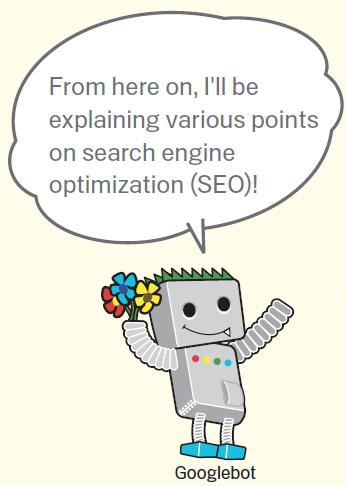One of the best ways to promote your website and drive quality traffic is through Search Engine Optimization (SEO). There are many ways to promote; Paid Advertisements, E-mail Marketing, Social Media Promotion, Article Marketing, Forum Marketing, Link Purchase, Viral Marketing and the list can go on.
So why would you choose SEO? Why would this particular online marketing technique be better than others? The answer is simple – it is more targeted, drives quality traffic and it’s free. Unlike other marketing methods SEO does not require payments. Hard work, dedication, persistence and patience are the keys to achieve great results.
According to statistics taken from Nielson, 62% of users click on links on the first page of search results; meaning that having a high rank in search engines could bring in many visitors to your website. Search Engine Optimization is all about tweaking your website and achieving a positive online reputation in order to get the highest rank possible on search engines for a particular keyword.
Where should I start?
Did you know that 90% of information you need to know in order to learn SEO is available online? The 10% is achieved from connections, experiments and your own ideas!

SEO CheckList:
Before performing SEO, you need to be familiar with all the techniques in the checklist below. This is the first and most important step in SEO. No skipping please!
Before you begin:
1. Define your Goal: Why choose SEO? Why would you want your website listed on Google?
2. Analyze the current search engine results.
3. Get new ideas and brain storm.
4. Research, Research and more Research!
5. Create a list of competitors.
Analyze your website:
1. Create a user-friendly website.
2. Have an easy to use design which allows users to navigate freely.
3. Do not spam, use annoying pop-ups and inappropriate advertisements.
4. Sign up with Google Analytics and use its data.
5. Sign up with Google Webmaster Tools and Bing Webmaster Toolbox.
6. Check cross browser compatibility.
On-page Optimization:
1. Write great, unique title tags. (use appropriate keywords)
2. Use keywords in H1 tags.
3. Optimize URL structure
(Bad – www.example.com/127462374.html
Good - www.example.com/latest-news)
4. Include keywords on images using 'alt' text and 'title' tags.
5. Provide contact information including a phone number.
6. Make sure your website is converting leads into customers.
Off-page Optimization:
1. Submit your website to search engines: Google, Yahoo, Bing.
2. Write frequent, high quality content.
3. Get as many relevant and quality links to your website as possible.
4. Actively participate on Facebook, Google+, Twitter, forums and blogs.
5. Use a great web hosting provider.
6. Do everything you can to be popular.
My personal advice is to never stop learning. SEO algorithms change frequently and become more sophisticated at distinguishing a bad website from a good website.
So why would you choose SEO? Why would this particular online marketing technique be better than others? The answer is simple – it is more targeted, drives quality traffic and it’s free. Unlike other marketing methods SEO does not require payments. Hard work, dedication, persistence and patience are the keys to achieve great results.
According to statistics taken from Nielson, 62% of users click on links on the first page of search results; meaning that having a high rank in search engines could bring in many visitors to your website. Search Engine Optimization is all about tweaking your website and achieving a positive online reputation in order to get the highest rank possible on search engines for a particular keyword.
Where should I start?
Did you know that 90% of information you need to know in order to learn SEO is available online? The 10% is achieved from connections, experiments and your own ideas!

SEO CheckList:
Before performing SEO, you need to be familiar with all the techniques in the checklist below. This is the first and most important step in SEO. No skipping please!
Before you begin:
1. Define your Goal: Why choose SEO? Why would you want your website listed on Google?
2. Analyze the current search engine results.
3. Get new ideas and brain storm.
4. Research, Research and more Research!
5. Create a list of competitors.
Analyze your website:
1. Create a user-friendly website.
2. Have an easy to use design which allows users to navigate freely.
3. Do not spam, use annoying pop-ups and inappropriate advertisements.
4. Sign up with Google Analytics and use its data.
5. Sign up with Google Webmaster Tools and Bing Webmaster Toolbox.
6. Check cross browser compatibility.
On-page Optimization:
1. Write great, unique title tags. (use appropriate keywords)
2. Use keywords in H1 tags.
3. Optimize URL structure
(Bad – www.example.com/127462374.html
Good - www.example.com/latest-news)
4. Include keywords on images using 'alt' text and 'title' tags.
5. Provide contact information including a phone number.
6. Make sure your website is converting leads into customers.
Off-page Optimization:
1. Submit your website to search engines: Google, Yahoo, Bing.
2. Write frequent, high quality content.
3. Get as many relevant and quality links to your website as possible.
4. Actively participate on Facebook, Google+, Twitter, forums and blogs.
5. Use a great web hosting provider.
6. Do everything you can to be popular.
My personal advice is to never stop learning. SEO algorithms change frequently and become more sophisticated at distinguishing a bad website from a good website.










Post A Comment:
0 comments: